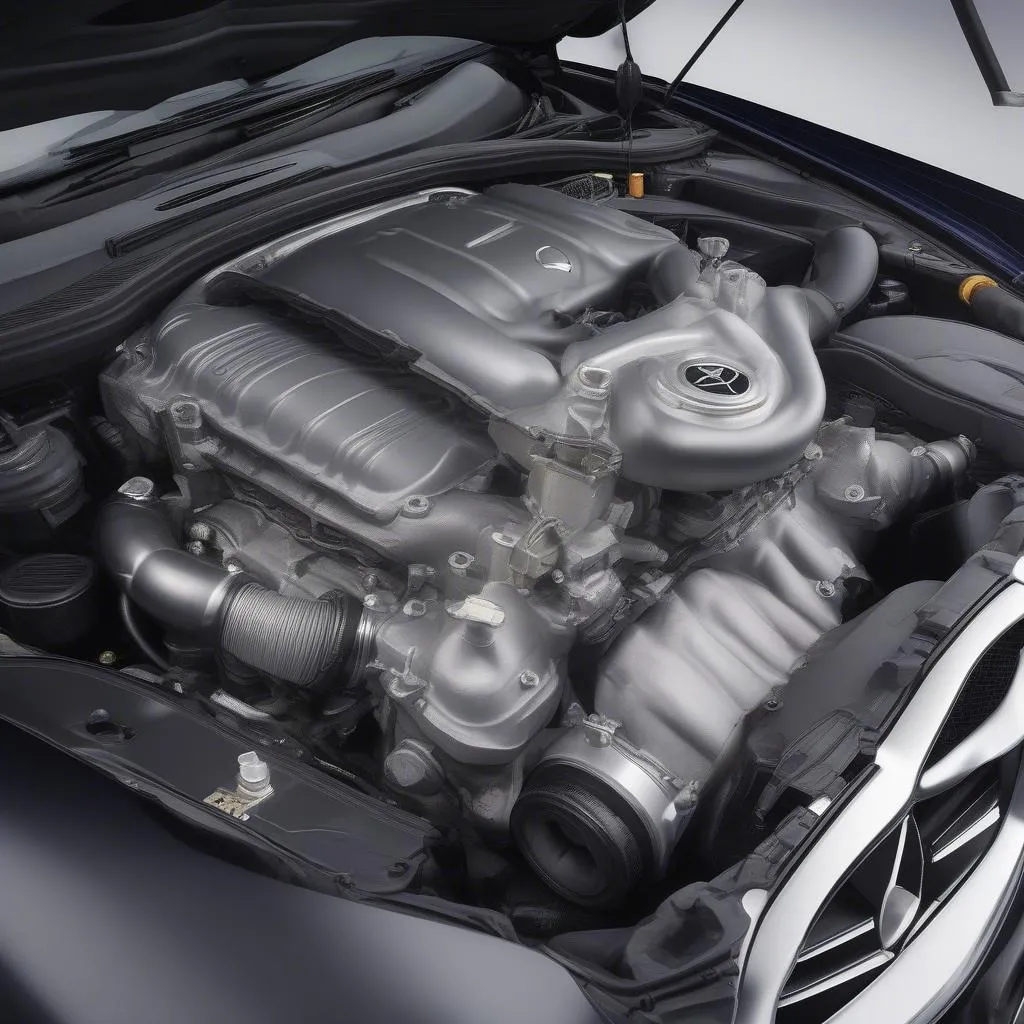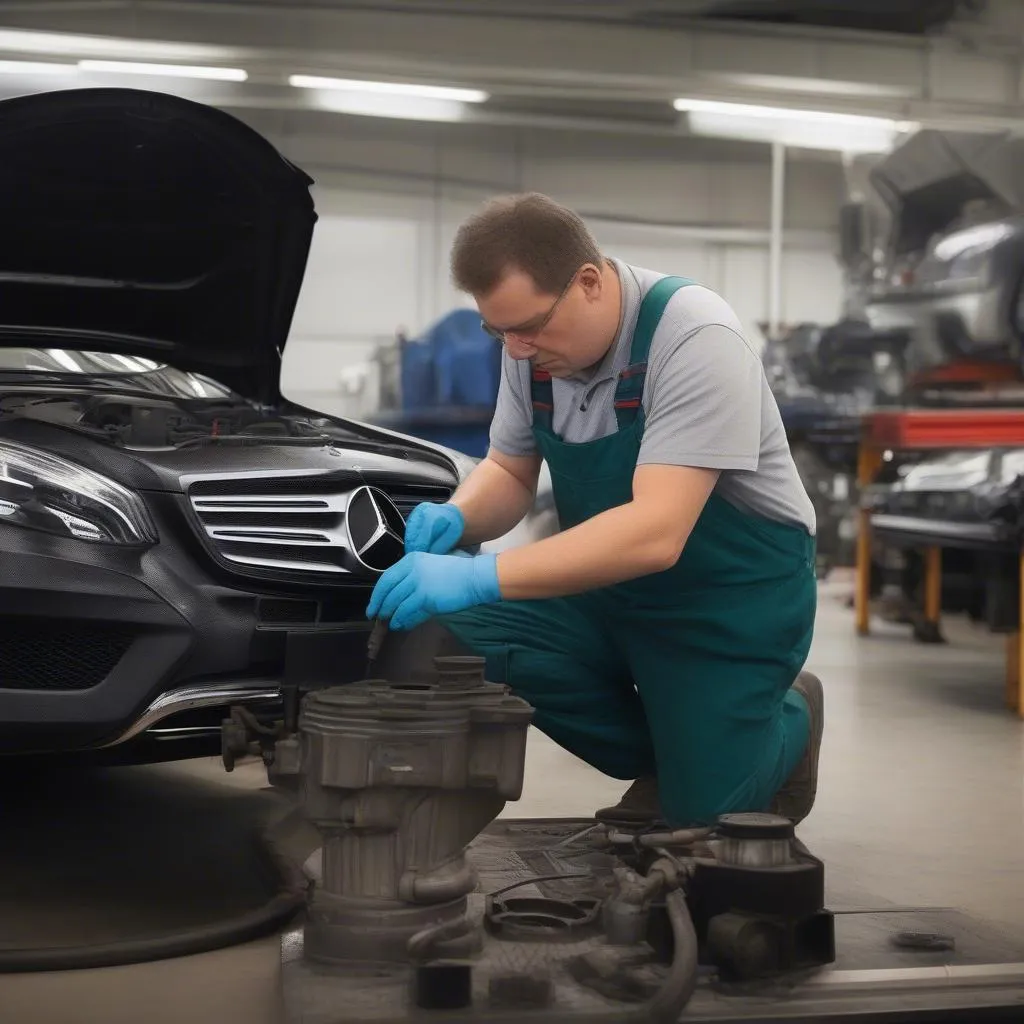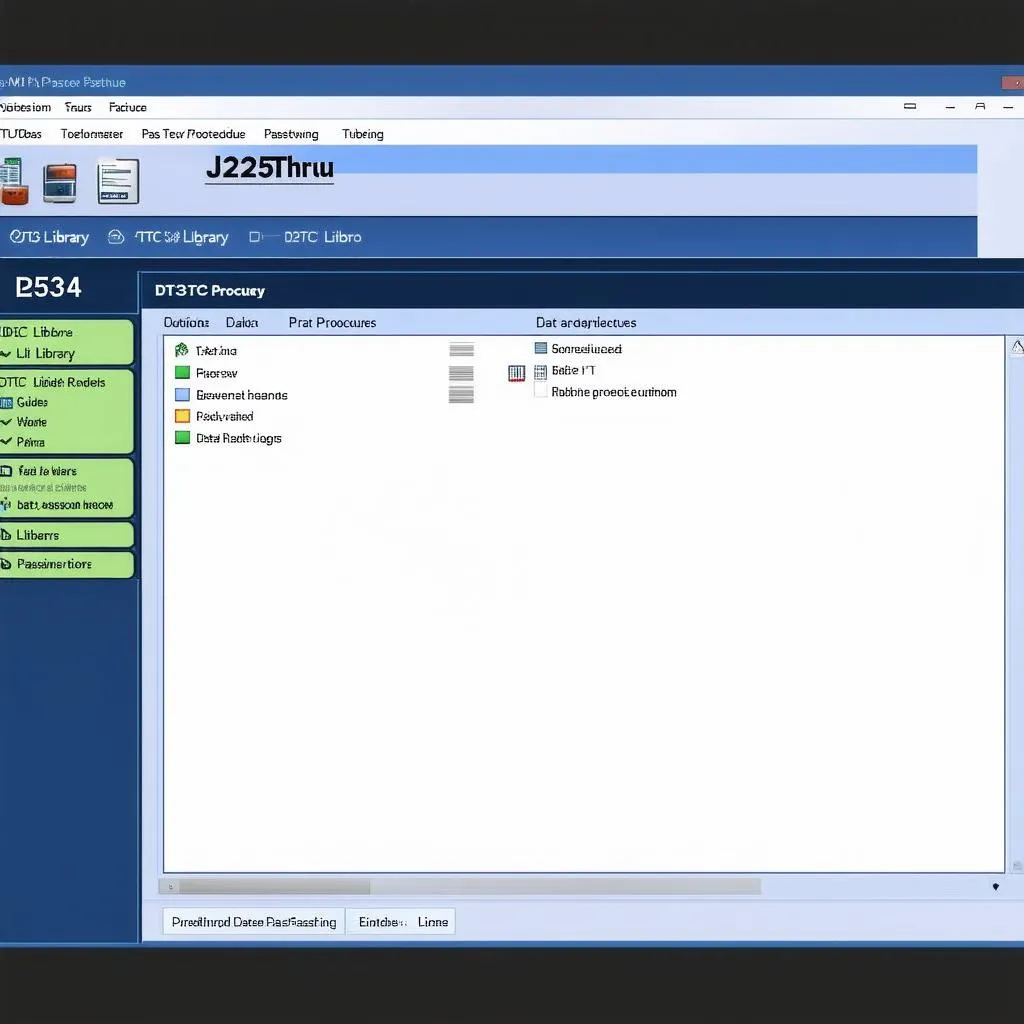Is your Mercedes C250 experiencing a sluggish response when you hit the gas pedal? This delay, known as turbo lag, can be frustrating and impact your driving experience. Don’t worry, we’ve got you covered! This comprehensive guide delves into the common causes of turbo lag in the Mercedes C250 and provides practical solutions to help you regain that exhilarating acceleration.
Understanding the Why: Causes of Turbo Lag
Before we jump into solutions, let’s understand what causes turbo lag in the first place:
- Exhaust Flow: Turbochargers rely on exhaust gases to spin their turbines. At low RPMs, the volume and speed of exhaust gases are insufficient to fully spool up the turbo, leading to a noticeable delay in power delivery.
- Wastegate Issues: The wastegate regulates boost pressure. A malfunctioning wastegate can disrupt this regulation, potentially causing a delay in turbo response.
- Boost Leaks: Any leaks in the pressurized air pathway between the turbocharger and the engine can significantly impact boost pressure and contribute to turbo lag.
- Sensor Problems: Faulty sensors, such as the Mass Air Flow (MAF) sensor or Boost Pressure Sensor, can send incorrect data to the engine control unit (ECU), affecting turbocharger operation.
Recognizing the Lag: Symptoms
How can you be sure it’s turbo lag you’re experiencing? Look out for these telltale signs:
- Hesitation on Acceleration: The most noticeable symptom is a delayed response from the engine when you press the accelerator pedal, especially at low RPMs.
- Sudden Surge of Power: After the initial lag, you might experience a sudden surge of power as the turbocharger spools up. This can create a jerky acceleration experience.
Gearing Up for the Fix: Essential Tools
To effectively diagnose and address turbo lag in your Mercedes C250, you may need some specialized tools, such as:
- OBD-II Scanner: This tool allows you to read and interpret diagnostic trouble codes (DTCs) stored in your car’s ECU, providing valuable insights into potential issues. Some popular options in the market include the Cardiagtech OBD-II scanner, known for its user-friendly interface and comprehensive diagnostic capabilities.
- Boost Leak Tester: This tool helps identify leaks in the pressurized air system by pressurizing it and allowing you to listen for escaping air or visually inspect for leaks using soapy water.
- Basic Hand Tools: A set of wrenches, sockets, and screwdrivers will be handy for inspecting and tightening various components.
Taking Charge: Addressing Turbo Lag
Here’s a step-by-step guide to help you resolve turbo lag issues in your Mercedes C250:
-
Scan for Trouble Codes: Begin by connecting an OBD-II scanner, like the one offered by CARDIAGTECH, to your vehicle’s OBD-II port. Read any stored DTCs related to the turbocharger system, such as boost pressure deviations or sensor faults.
-
Inspect for Boost Leaks: Carefully examine all the hoses and connections within the intake system, from the turbocharger outlet to the intake manifold, for any signs of cracks, loose clamps, or damage.
-
Check the Wastegate: Inspect the wastegate actuator arm for smooth movement and the wastegate itself for any signs of sticking or binding.
-
Test Relevant Sensors: If the DTCs point to sensor issues, test the MAF sensor, Boost Pressure Sensor, and other related sensors for proper operation.
-
Consider Software Updates: In some cases, software updates from Mercedes-Benz might be available to optimize the engine and turbocharger control strategies for improved responsiveness.
 Turbocharger Diagram
Turbocharger Diagram
Common Queries about Mercedes C250 Turbo Lag
Q: Can a dirty air filter cause turbo lag?
A: While a severely clogged air filter can restrict airflow and potentially contribute to a feeling of sluggishness, it’s less likely to be the primary cause of noticeable turbo lag. However, it’s still a good practice to replace your air filter as part of regular maintenance.
Q: Is turbo lag a common problem in Mercedes C250s?
A: While some degree of turbo lag is inherent to turbocharged engines, excessive or worsening turbo lag can indicate an underlying issue that needs attention.
Q: Can I use a performance tuning software to reduce turbo lag?
A: Performance tuning software can sometimes adjust boost thresholds and engine mapping to minimize perceived turbo lag. However, it’s crucial to choose reputable tuners and ensure the modifications are within safe and reliable operating parameters for your specific engine.
 Mercedes C250 Engine
Mercedes C250 Engine
In Conclusion: Reclaiming Your Drive
Addressing turbo lag in your Mercedes C250 is crucial for a smooth and enjoyable driving experience. By understanding the causes, recognizing the symptoms, and following the troubleshooting steps outlined in this guide, you can often identify and resolve the issue effectively. Remember, if you’re unsure about any step of the process or lack the necessary tools and expertise, it’s always best to consult a qualified mechanic or Mercedes-Benz specialist.


